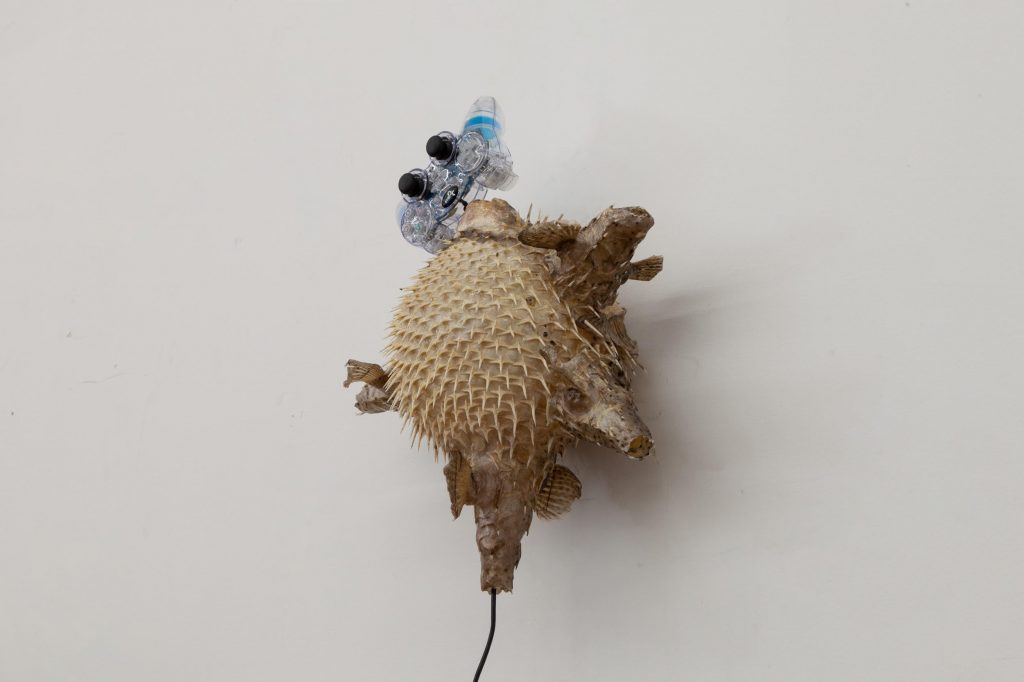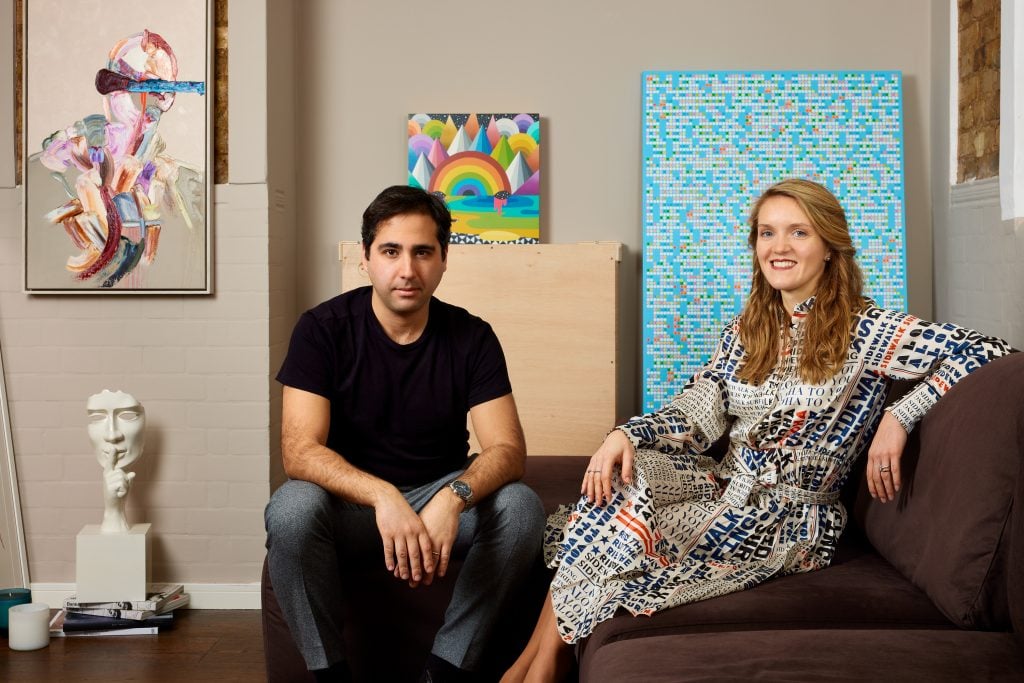Artscapy, founded by Alessandro De Stasio and Emilia De Stasio, is a comprehensive online platform that focuses on the unique needs of art collectors—both new and experienced. With a vision “to usher in the digital transformation and democratization of the art world,” Artscapy was developed to address common pain points of the modern collector. With the ability to explore current trends, connect with other art enthusiasts, and add to and manage your art collection, Artscapy offers the tools to engage easily and confidently with the art world—all in one place.
The platform has seen incredible growth globally in recent years as collectors (or those wanting to start collecting) have become more accustomed to online transactions rather than the typical brick-and-mortar gallery experiences that were at one point the only option. Employing cutting-edge technology and prioritizing privacy and security, Artscapy offers a safe, widely accessible, and convenient approach to art collecting that befitting of the Digital Age.
We reached out to the Artscapy founders, and learned about what art collecting trends they’re watching in the art world, and what’s next for the collectors-first platform.

Courtesy of Artscapy.
Do you think that the definition of art collecting has changed? In what ways?
Art collecting hasn’t changed, the medium of art available to buy has evolved, bringing with it a new pool of collectors between the ages of 18 to 44. This demographic has grown up in the digital-first world, where owning assets digitally is as appealing as the physical world. About half (47%) of young collectors (those who started buying art less than 3 years ago) made their first purchase online.
Collecting art is moving away from being an obscure hobby that only a select few engage with, towards an activity that is reaching a greater audience, becoming increasingly prevalent and attractive for younger demographics. Buying art supports our society’s cultural production, benefits mental well-being, and provides intellectual stimulus. The internet created not just wider access to art and demand for information transparency, but it also enabled the purchase of art internationally.
How about the art-buying process? Has that changed? What does it look like today?
The next generation of collectors is buying art online. Among new collectors, those who started buying art in the past three years, 47% made their first purchases online. These collectors buy art without ever stepping foot into a physical gallery or auction house. The same behavioral trend applies to experienced collectors, where this year online buying exceeded physical buying for the first time. This points to the vital importance of providing safe, accessible, and transparent online buying experiences. Artscapy is championing this idea through a commitment to supporting collectors by conducting due diligence on every artwork available for sale, pricing transparency, and providing a digital ecosystem to meet every need along the collecting journey.
The Covid-19 pandemic impacted the art world in a myriad of ways. What are some changes in the art market that you’ve noticed over the past couple of years?
Covid expedited the digitalization of everything, including art. Buying art online was already on a steady upward trend before the pandemic—it then accelerated as the industry grappled with a new normal. Meanwhile, although art fairs have returned and show strong sales results, buyers are increasingly exploring fairs’ digital avenues through collaborations with online platforms.
Then there’s the advent of NFT’s (non-fungible tokens). It is encouraging to see contemporary artists exploring new opportunities to produce meaningful new works via this technology. In doing so, we’ll see a shift to NFTs that can present a new direction of travel in art history.
Sotheby’s doubled down on digital collectibles, notably Beeple sold the most expensive NFT for $69 million. This price may surprise traditional art buyers, but 80% of buyers have bought from two or more online platforms in the last year—buying art digitally or in digital forms is the new normal.
Are there any trends or developments happening right now in the art world that you’re interested in or optimistic about?
The evolution of relationships between collectors and galleries is fascinating. Galleries remain important, using their knowledge and research to propose new art and promote artists. It is interesting to see that despite the rise of online sales, the number of galleries collectors buy from does not increase—they remain loyal. Given that the vast majority (80%) of buyers have used online platforms to buy from galleries, it shows that buying art online helps increase access and removes barriers to exploring art.
Looking to the future, are there any developments for Artscapy that you are particularly excited about?
Our proposition, providing the world’s first Art Account, has resonated strongly with our collectors. Our growth has vastly exceeded expectations. It’s been astonishing to see how international our collector base is. For example, 70% of our emails are opened in the United States, which is incredible. The core services integrated into the Art Account, such as advanced data analytics and insurance, really redefines what an art platform can be. As we reach thousands more passionate art collectors, it’s exciting to know the impact we may have around the world.
What role do you think Artscapy will play in the future of art?
We’re focused on creating the best Art Account for collectors. Creating the defining art-collecting platform for any collector is our mission. Artscapy brings together every service required for managing a growing art collection, from collection management with market value tracking and embedded insurance to a curated marketplace of galleries and vetted collectors. Integral to our platform is our partnerships with galleries. Connecting galleries with collectors and providing core services such as KYC/AML compliance directly on our platform can enhance the collecting experience.

Michael E. Smith, Untitled. Courtesy of Artscapy.
What is the most recent artwork that you purchased?
Our art collection continues to revolve and evolve around three pillars: identity formation, sociopolitical topics, and environmental issues. We recently bought a work by the conceptual sculptor Michael E. Smith. The work, Untitled, is a punchy composition of a pufferfish onto which Smith has attached three additional fishtails pointing outward. On top, there is a retro video game joystick violently inserted. Smith’s work is powerful and parsimoniously delivers a strong narrative around the impact that humans have on nature, and how industrial remains coexist with the remnants of the natural world. He uses discarded materials and used items in his sculptures which serve to underscore a haunting visual expression.
Learn more about Artscapy here.











